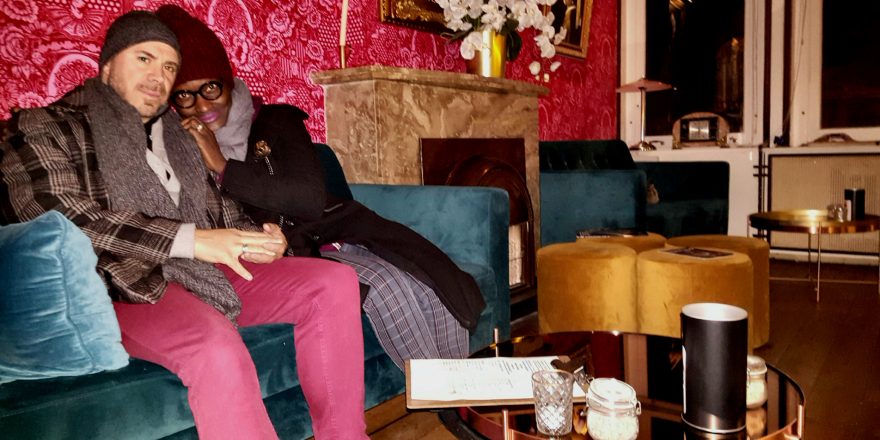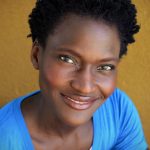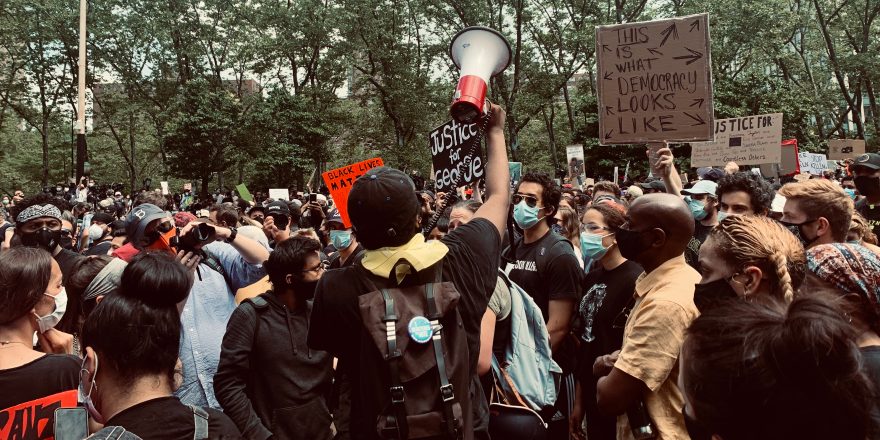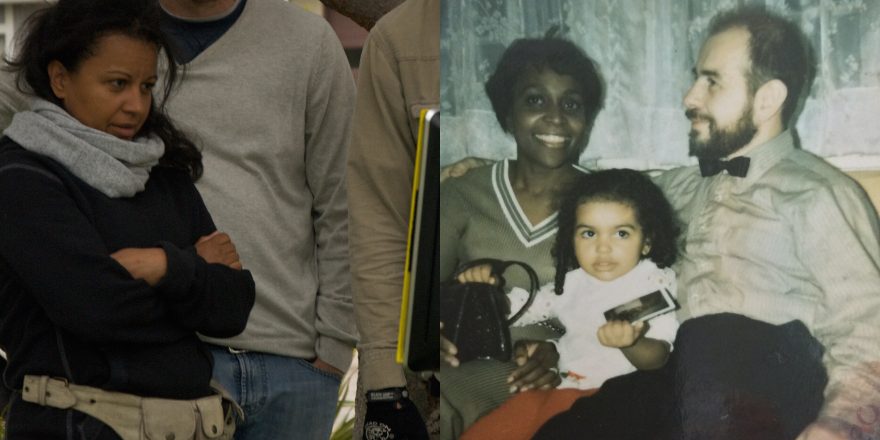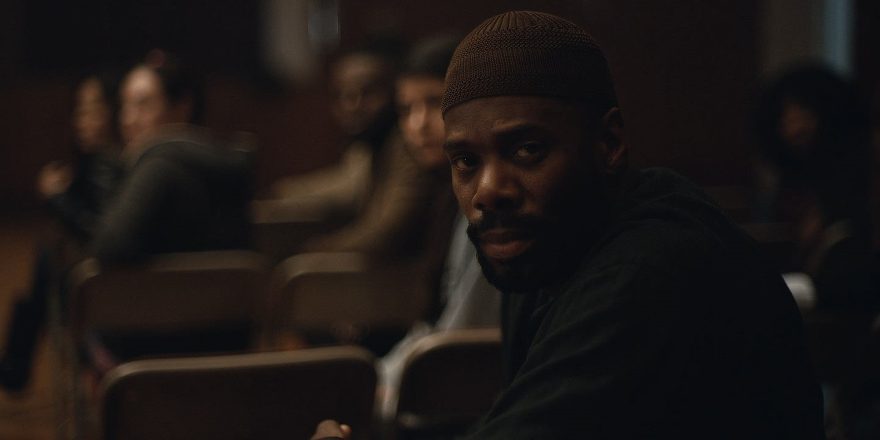It was mid-October 2013. My autobiographical short film Asa, a Beautiful Girl was screening at the Reel Sisters of the Diaspora Film Festival in New York City. I was up for a Best Short Film award that I didn’t expect to win, so I didn’t prepare a speech. I won, and was literally speechless. I was shaking in my metaphorical boots as I made my way down to the stage to accept my award. I don’t remember much of what I said – I was too nervous to – but I do remember one phrase, because of how the audience reacted to it. It was the sentence with which I concluded my speech: “Thank you for acknowledging my existence.”
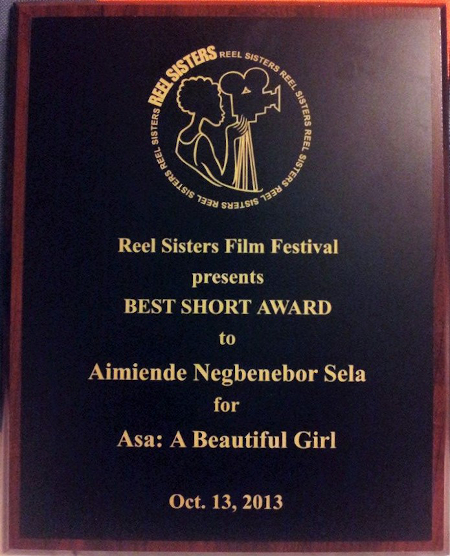
It’s been a few years since that memorable October evening, and I think I’ve only recently come to understand why I said that. My guess is that it’ll take me a few more years to fully grasp the audience’s lovely reaction, but I thanked that audience for acknowledging my existence because it occurred to me that they chose to see me. I happen to be someone who is acutely aware of the concept of being unseen as a human being, unseen as the same, unseen as an equal, unseen as worthy. I’m a nappy-haired, dark-skinned African woman. That said, I’m also acutely aware of our humanity; our ability to empathize with, to love, to protect, to respect and to value a person (or group of people) we choose to acknowledge. So, what makes one person worthy of acknowledgment and not another?
This is a question I’ve grappled with and continue to grapple with, and I imagine that I am not alone.
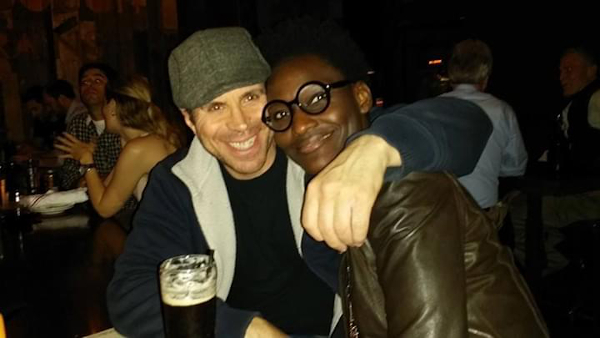
My husband Robert (but we all call him Bobby) is “White.” He’s part Irish, part Italian, and he’s literally my best friend. We have all kinds of invigorating conversations, discussions, debates and arguments, and I always come away from them having learned something. During one of our recent discussions, in light of the unsettling events following George Floyd’s murder, this pinch point came up again for me in the form of a direct question, which I (true to form) posed to Bobby: “What makes me so frighteningly different from you, when we are clearly one race?” Bobby is one of the most empathetic people I know and his capacity for seeing multiple sides of any discourse or argument is admirable. To this question, he responded by referencing something he’d heard on an episode of particle physicist Brian Cox’s BBC Radio 4 program, The Infinite Monkey Cage. When I listened to the program myself, it gave me factual validation to a strong, foundational belief I’ve had for as long as I can remember: that we all live the same lives, we’re just colored differently. And that this phenomenon of dividing individuals by race is, in fact, manmade and an unfortunate derivative of colonialism.
The show revealed that, genetically, there are measurably vaster differences between two individuals of the same “race,” i.e. people with the same skin pigmentation, than between two individuals of different “races,” i.e. different skin pigmentations. That blew my mind. I guess one could call it nature’s wicked sense of humor. Her way of teaching us never to judge a book by its cover, by having a person who looks so different from you be actually much more like you than the person who looks exactly like you.
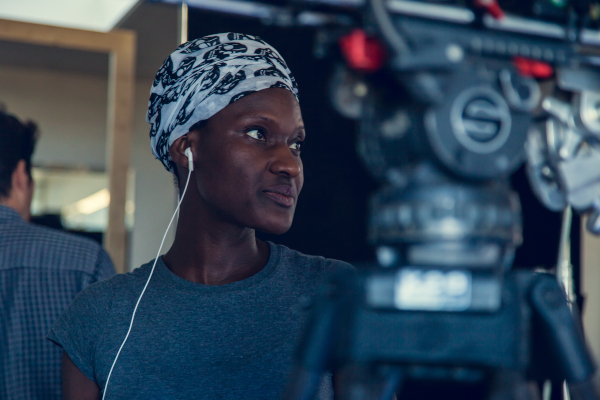
Bobby was also instrumental in helping me understand another concept: how we can better make sense of our complex world through play. And, as it turns out, this is my process. Being a creative person, I tend to have several stories and characters vying for attention in my head while I’m trying to sort out life stuff. For me, taking the mess that’s going on inside my head, placing it in front of my eyes, and examining it allows me to see things more clearly. It helps me to put things down on paper. Sometimes these things find their way into my films, and on many occasions they lead me down a path of discovery, or present me with a theory that gets validated – as in this instance – by science.
Let me explain. I had struggled for a while to find a way to make my eyes see what was so different about me. What was it that only took folks one look to recognize and label. I still don’t see it, but back in the day when I lived in New Jersey, I was babysitting for a beautiful family. They had a young daughter and a young son; I adored them both and the feeling was mutual. One evening, the daughter – let’s call her Lila – and I were on the floor drawing and she looked up at me and asked, “Why are you black?” I had never been asked this question before, so it took me a while to figure out what to say. Lila set her beautiful inquisitive brown eyes on me and kept them there, waiting for the answer she was sure I had to her question. So, I drew her a series of stick figures: my representation of our basic skeletal, flesh-and-blood anatomy, which is the same for every human. We all have a skeletal system, and we’re all made of flesh and blood. I then colored in their faces – we all have one of those too, last time I checked.
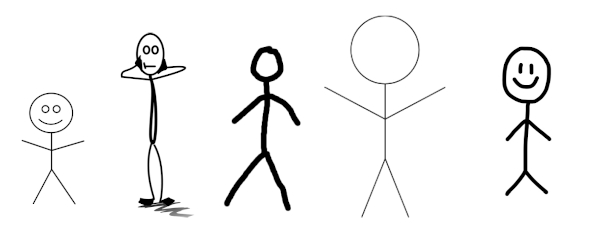
As I colored in their faces, I explained to Lila that I was born this way: “Black.” Then I pointed to my unimpressive sketches and asked her, “What do you see?” Would you believe what this brilliant little girl said? She said, “Stick figures.” So I asked her what was different about them. She said, “Their faces have different colors.”
In that moment, while sorting out my thoughts through play and trying to find an appropriate answer for Lila, I’d come to a realization. And that’s what that episode of The Infinite Monkey Cage solidified for me – the grounded understanding that we are all the same, just colored differently.
You should try drawing stick figures too, and see what it helps you realize.
But, before you begin, I’d like to share something else I discovered while on this path: I learned that loving yourself wholeheartedly is truly an amazing feat.
Let that marinate as you lay out your coloring paper on a flat surface.
With your pencil, draw five stick figures. They don’t have to be perfect. Allow yourself room to be creative!
For the fun part, color in their faces. Feel free to mix your colors. Go big, have a blast. This is meant to be fun. If you’re more of a minimalist, draw your stick figures with your crayons like so:

To get back to that other lesson I learned, well, here’s the story. I was going through “something” the day I drew my set of stick figures. It was after an incident in which someone (not Lila) had made me feel truly terrible about myself. I’d stood in front of my bathroom mirror for a while, trying hard to remember what exactly it was that I liked about myself. It’d been years coming, the epiphany I was about to have, but at that moment … well, I couldn’t see two inches past my nose.
See, we all have parts of us that we just have to admit are freaking fabulous, things about us that we really, really like. But there’s also what my hubby Bobby calls the “shadow self.” The thing or handful of things about you that you just can’t stand, can’t face, wish would just go away, just can’t change and makes you wish you were someone else. If you’re a human reading this, my assumption is that it’s probably easier for you to list the latter than it is to list the former.
So, as I was standing there going through my list of horrors and crying my eyes out, I realized that if I could take all those things about me that I didn’t like, even the parts that may seem abominable, and I made the decision to love them wholeheartedly and I succeeded in doing this, it would not be such a feat to love someone who simply looks different from me.
Ain’t that something?
Granted, humans are a piece of work (a lot of the time) so you may not love a person for many reasons, but it won’t be because a primal fear is triggered of them being the “other.” The person across from you, next to you, on top of you, underneath you (whatever floats your boat) – we’re all stick figures. That’s our base, that’s us.
The colors, that’s just pigment.

I know I’m simplifying what may seem like an insanely complex phenomenon, but I’m not. We’re literally descendants of the same ancestor; cut from the same cloth, similar in so many ways, even as we are members of varied tribes.
We hunger, we yearn, we lust, we love, we hurt, we get hurt, we need, we want, we make mistakes, we make sacrifices, we fall, we get up, we fail, we succeed, we cry, we laugh … the exact same way. We’re fundamentally the same, you and I. It’s just our packaging that’s different.
So, here’s my challenge to you. See those parts of you that scare you and choose to love your whole self, those parts included, flaws and all. It’s not an easy task by any stretch of the imagination, but do it anyway. See how that makes you feel and think, how it affects your level of empathy, and the way you see yourself and others. Work on it, hard enough that you’re able to see yourself in others who probably look nothing like you; hard enough that you see and therefore love yourself in that person.
Oh, and to finish up that project you just tacked to your refrigerator door, make a list of five fundamental differences between each of your stick figures and examine them. The work isn’t complete without that last step.
I’ll start you off:
1) Their faces have different colors; that makes them interesting to me.
OK, your turn.


